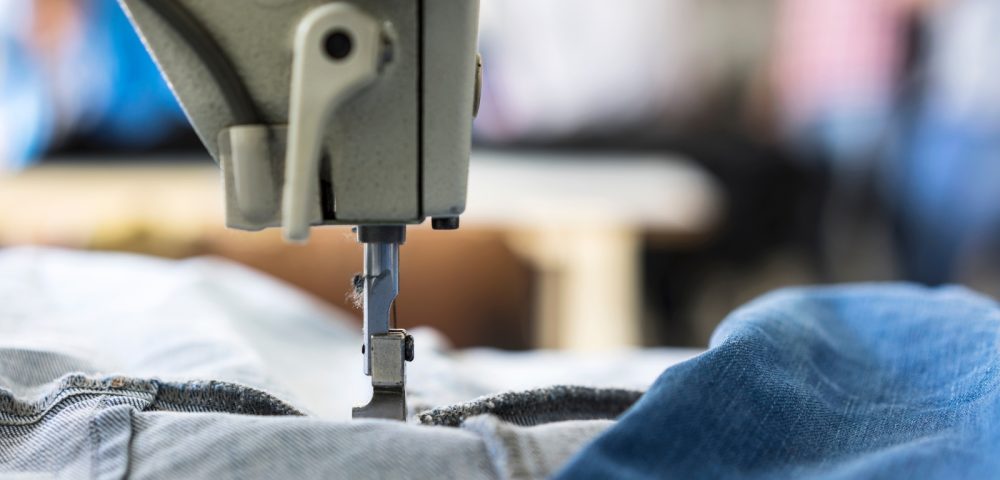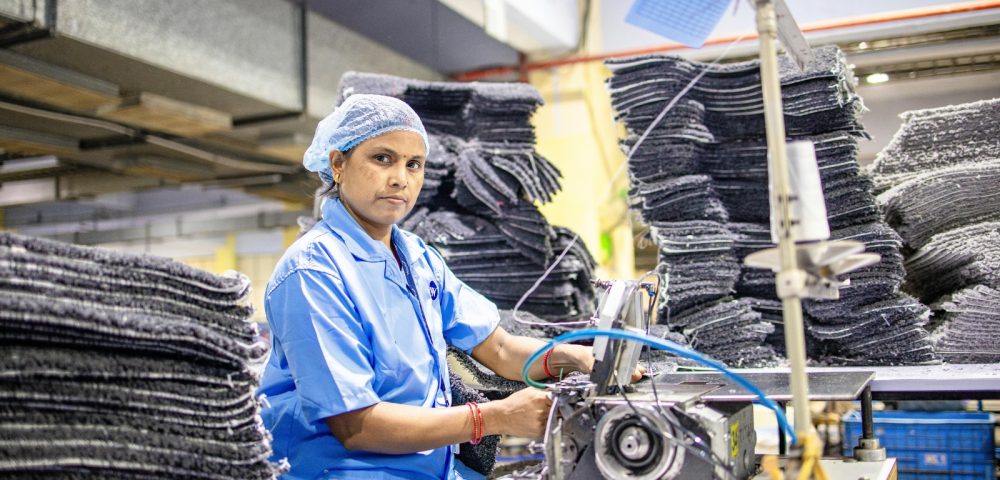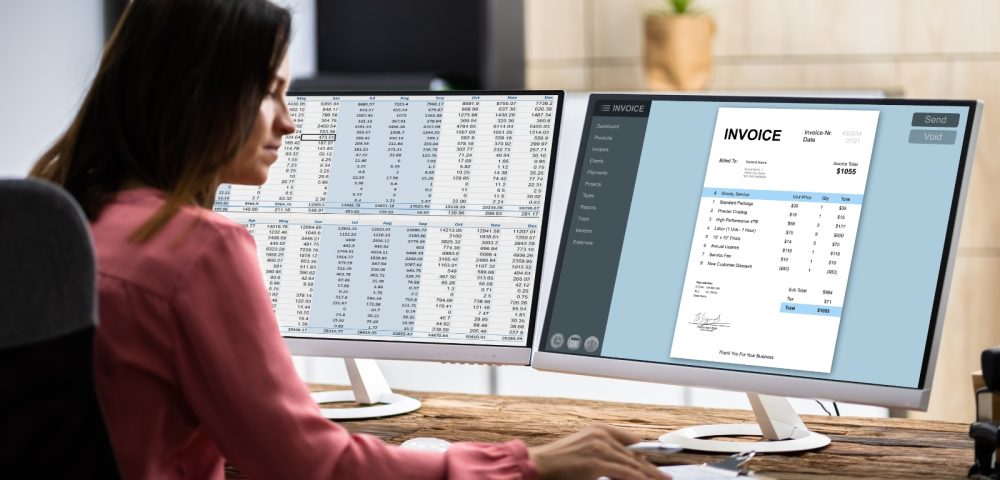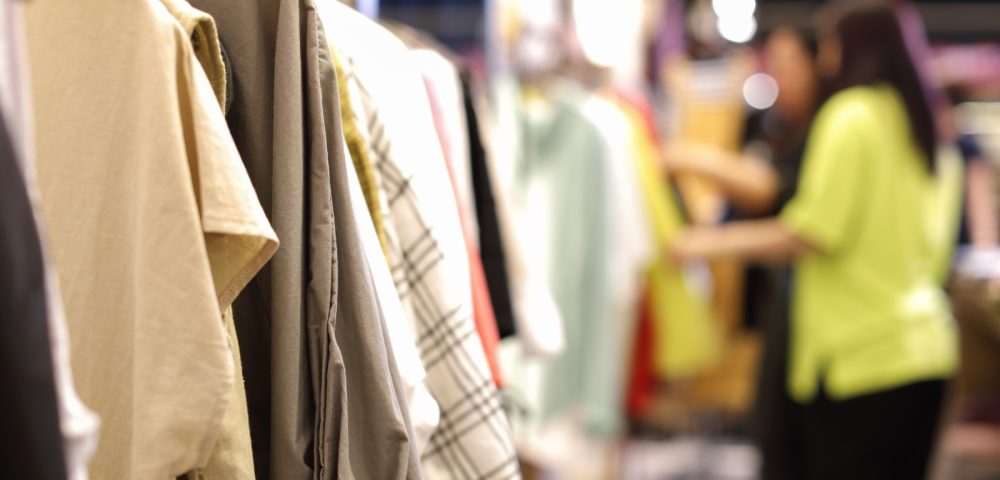We all know the apparel industry as a high-revenue-generating domain. With China, Bangladesh, India, and Vietnam dominating the apparel landscape, the sector see massive growth by 2030. However, the final product we see in the clothing stores or in an eye-catching advertisement has its own story to tell as it has to walk through a number of processes from its caterpillar age until the final production. If someone expects to venture forth as an apparel entrepreneur, it is important for them to have a good understanding of the entire process.
This article gives an overview of the process of apparel manufacturing.
What is the Apparel Manufacturing Industry?

- The textile and apparel manufacturing business is a vast global sector that produces fibres, cloth, and fashion products for billions of people and households and industries throughout the world. It is a multitrillion-dollar enterprise and was able to gain the revenue of USD 1,749.67 billion in 2024.
- If we define this industry, it simply represents the entire process of creating clothing, from choosing the fabric to distributing it to the customer’s stores.
- As much as the sector gains in profits, its value chain is highly complicated. The latter is a series of interconnected processes that convert raw fibres into completed clothing and textile goods, which are then sent to final customers.
- If you take a closer look, even though it reflects making clothes in simple terms, this one is known as an intricate and multi-stepped mechanism. This represents the entire cycle of choosing, cutting, stitching, and finishing fabrics. Whether it is creating quick fashion, luxury fashion, or eco-friendly clothing, apparel manufacturers’ primary focus is to ensure they follow an efficient network to come up with good-quality products.
Apparel Manufacturing Process

Sampling
Sampling is the process when factories move with creating garment samples based on the design specifications provided by the customer. This stage is known as ‘product development’ in the garment industry. Before moving to finalise the final product, the manufacturers are supposed to obtain the buyer’s permission for a certain design. This is where the requirement for sampling comes in at the various stages. However, the sample has several identities throughout the development stage, varying from prototype, fit, size set, salesman, production, top of production (TOP), and shipment.
Costing
We know that the sole purpose of a business is to generate a profit. Imagine what would happen if the business did not calculate the cost they have to spend on one order in the beginning. This does not limit to one aspect, but it includes raw materials, direct labour, and direct and indirect overheads, etc., which is what determines the cost of a garment. The factory must give the garment’s FOB (freight on board) price after creating the sample or upon receiving the buyer’s sample. An apparel manufacturer creates a cost sheet that includes the cost of raw materials, the total cost of direct labour for each step, and factory overhead in order to determine FOB. The total of the clothing cost, manufacturer’s margin, and taxes is known as the FOB.
Production Planning
The manufacturer plans for the order’s raw material requirements after receiving the order. raw materials such as hang tags, packing supplies, sewing threads, textiles, and additional accessories. The factory schedules things like when to begin cutting, when to submit the pre-production sample, when to finish sewing and finishing, when to do the final inspection, and when to ship. The job responsibility for various processes is established at the production planning stage.
Cutting
At this point, factories arrange fabrics in layers on a table until they reach a specific height. The cloth is then split from the layer using a cutting machine to form garment forms or patterns. It is practicable to layer fabrics using both automatic and manual spreading methods. The cut parts are then sent to the sewing room after being numbered and packaged.
Good cutting quality has a significant impact on the final product’s (garment’s) quality. The fabric, the primary component of clothing, accounts for around 70% of the entire cost of the item. This is why cutting is considered to be one of the crucial procedures that controls fabric conservation and garment quality, more than other processes.
Sewing or Stitching
In the sewing room, garment panels are sewn together using sewing machines. Sewing is the conversion of 2D cloth designs into 3D shapes. An operator operates the machine, which joins garment sections together with sewing threads. There are several types of sewing machines available for use. Machines are chosen according to the requirements for seams and stitches.
Sewing machines have typically been laid in a raw state. The line starts with cut sections that are fed through it, and in the end, a finished garment is produced. Operators manage each machine independently, and each operator only sews one or two garment processes.
A line consists of one completely or partially dedicated supervisor, sewing operators, a quality inspector, and an assistant who supplies them with cut pieces, thread, and other trimmings.
Trimming of Threads
After sewing, the operators use a hand trimmer to snip all dangling threads. Nowadays, auto-thread-trimming devices are also available to complete this work. Additionally, if there are any loose threads within a garment, the operators tend to eliminate them. Garments with no loose threads or lengthy tails are fundamental quality requirements.
Washing
When the customer wants the clothes washed or they have given particular finishing instructions, then only washing occurs. Although the buyer undertakes the necessary cleaning for orders, the factories clean the light-colored clothing as a practice to get rid of dirt and stains.
Finishing
Normally, this procedure involves spotting, ironing, measuring, and clothing inspection. After carrying out the sewing process, it is the responsibility of the quality checkers to inspect each piece, aligning with the requirements and guidelines of the client.
This is where the measurements and visual appearance are routinely checked. Spotting is necessary to remove the stains from the component parts. For example, there can be various kinds of oil stains, markings, and hard stains on the cloth. The operators remove them using different chemicals or solvents. Then, using a press, they iron each cloth in order to eliminate wrinkles.
Packing and folding
After pressing, there is a different department within a factory to take care of folding using cardboard or tissue. The way that they fold garments is different from product to product or from client to client. To ensure the safety of the hang tags, special tags, and price labels, the operators attach them with plastic kimbles or threads.
After being folded and labelled, the clothing is placed into a plastic bag. During this stage, internal quality controllers also inspect clothing at random, only to guarantee that only high-quality items are sent.
Final Assessment and Distribution
Following packing (sometimes referred to as shipment), the buyer’s quality assurance (QA) department inspects the clothing before they dispatch the order.
For this last inspection task, apparel manufacturers usually hire a third-party quality auditor. The customer accepts the cargo if the packaged items satisfy their quality requirements. After that, the factory ships the items to the buyer.
Cerexio MES for Apparel Manufacturing Operations

Cerexio has developed a customisable Manufacturing Execution System that is perfect for many domains. The apparel sector can simplify its operational framework from planning to distribution using Cerexio MES, as it offers many features for financial planning, production design, machine health assurance, quality check, etc.
Streamlining Complex Apparel Processes Using Modern Tools

Why waste time, resources and money on your intricate apparel production networks when you can streamline them with just a few clicks? The world moves fast towards technology, and you will be left behind if you hesitate to adapt to the competition.
FAQ about Apparel Manufacturing
Apparel manufacturer is a term that reflects the entrepreneurs who have businesses that produce clothing and any items that can be worn by the body. Apparel manufacturers have a massive competition around the globe as the sector is a soil for the seed companies to flourish.
The act of drawing out a blueprint for your clothing is called pattern creation. When sewing a garment, a pattern serves as a template for cutting out cloth that meets the necessary measurements. It takes into account the kind of cloth, how the user is supposed to fit, and any trimmings that will be applied.
It does not matter what aesthetic roots, styles, purpose, or materials are concerned, apparel means all objects used on the human body, including clothing, footwear, accessories, etc.
